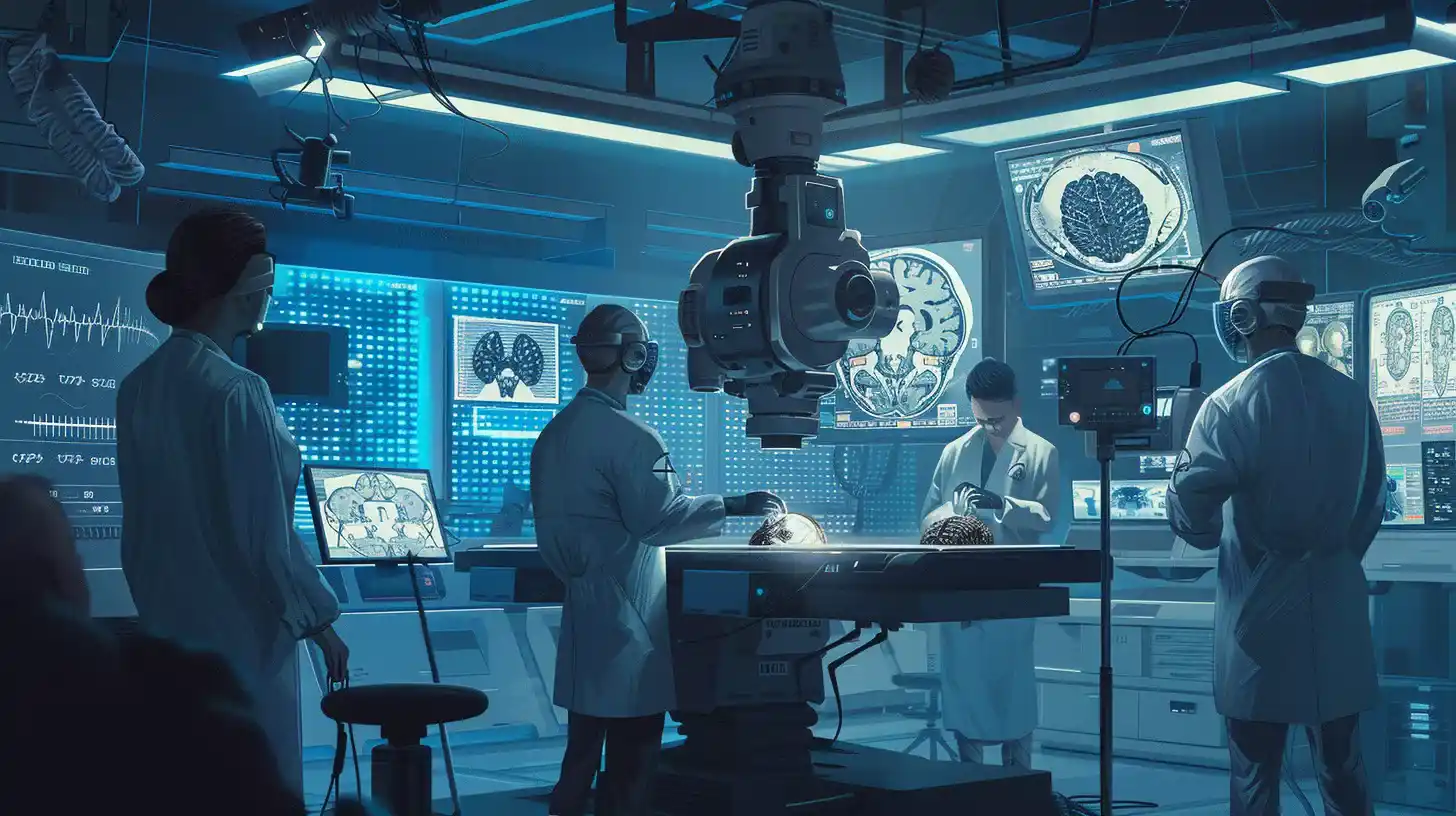Table of Contents
Head Transplants: Hold onto your scalp! A new player has emerged in the brain-computer interface arena, and their goal is nothing short of mind-blowing (literally). Bainbridge, a US-based startup, has unveiled a concept that’s sent shockwaves through the scientific community and social media alike: head transplants.
Yes, you read that right. We’re not talking about Hollywood prosthetics here. Bainbridge envisions a future where a patient’s head, complete with consciousness, memories, and cognitive abilities, can be transplanted onto a healthy donor body. This radical procedure aims to offer a lifeline to those battling untreatable conditions like late-stage cancer, paralysis, and neurodegenerative diseases.
Sparking Controversy and Showcasing Cutting-Edge Technology
The concept video, showcasing autonomous surgical robots performing delicate surgery, has sparked outrage and awe in equal measure. Social media users are a divided bunch, with some questioning the ethics and others marveling at the audacity of the idea.
But BrainBridge isn’t just another flashy startup chasing clout. They claim their approach is meticulously planned, and backed by extensive research. They propose using high-speed robotics to minimize brain cell damage and ensure seamless compatibility between the head and donor body.

Advanced AI algorithms, they say, will guide the robots in meticulously reconnecting the spinal cord, nerves, and blood vessels. Their secret weapon? A proprietary chemical adhesive and polyethylene glycol to reconnect severed neurons.
“Every step of the BrainBridge concept has been carefully thought out based on extensive scientific research,” says Hashem Al-Ghaili, project lead at BrainBridge. “Our goal is to push the boundaries of medical science and provide innovative solutions for those battling life-threatening conditions.”
A Medical Marvel or Just a Mad Scientist’s Dream?
The question remains: is this a medical marvel or a mad scientist’s dream? The scientific community has yet to weigh in, but BrainBridge is confident. If their feasibility studies yield positive results, they believe the first head transplant surgery could be performed within eight years.
This audacious proposition raises a multitude of ethical, philosophical, and logistical questions. Will the “transplanted” person retain their original identity? What are the long-term health implications? And let’s not forget the hefty price tag – such a procedure would likely be out of reach for the average person.
One thing’s for sure: BrainBridge has ignited a fiery debate. Whether their vision becomes reality or remains a science fiction fantasy, their work pushes the boundaries of what we thought possible. The future of medicine might just be getting a whole lot…headed in a new direction.
Head Transplants: Can We Outrun Mortality?
BrainBridge’s head transplant concept isn’t just about groundbreaking surgery; it’s a Pandora’s box overflowing with ethical dilemmas. The sanctity of life, the definition of death, and the very essence of self all hang precariously in the balance.

Who Gets a Second Shot?
Bainbridge envisions this procedure for those with terminal illnesses. But with limited donor bodies and sky-high costs, fierce competition for this “ultimate” treatment seems inevitable. Will it be a race for the wealthy, or will complex ethical frameworks be established to determine who gets a shot at a borrowed body?
Is it Still You?
The human body is more than just a collection of flesh and bone. Our experiences, memories, and the intricate dance of neurons define who we are. Can a head transplanted onto a new body truly retain its original essence? Or will the recipient wake up to a sense of disassociation, a stranger piloting a borrowed vessel?
Playing God?
The religious and philosophical implications are equally profound. Does tampering with the natural order of death constitute playing God? Are we venturing into uncharted territory, defying the very boundaries of life and mortality? These are questions that science alone cannot answer.
These ethical quagmires demand open and honest conversations. Scientists, ethicists, philosophers, and theologians all need to be part of the discourse. Only through a collaborative effort can we navigate the complexities of this mind-bending procedure.
The Road Ahead: A Scientific Everest
BrainBridge’s ambitious timeline of eight years for the first head transplant is undeniably optimistic. The technical hurdles are immense. Perfecting the delicate robotics, ensuring seamless nerve reconnection, and suppressing immune rejection are just a few of the Everest-sized challenges they face.
But scientific breakthroughs often emerge from seemingly insurmountable odds. BrainBridge’s research, even if it doesn’t culminate in a full head transplant, could yield invaluable insights in areas like neural regeneration and surgical robotics. The ripple effects of their work could benefit countless patients, even if the head transplant itself remains a distant dream.
The journey towards a head transplant is fraught with ethical concerns and scientific roadblocks. But one thing’s for certain: BrainBridge has ignited a spark, a conversation about the very essence of life and death. Whether this spark leads to a medical marvel or a cautionary tale, it compels us to confront the ever-blurring lines between science fiction and a very real future.





